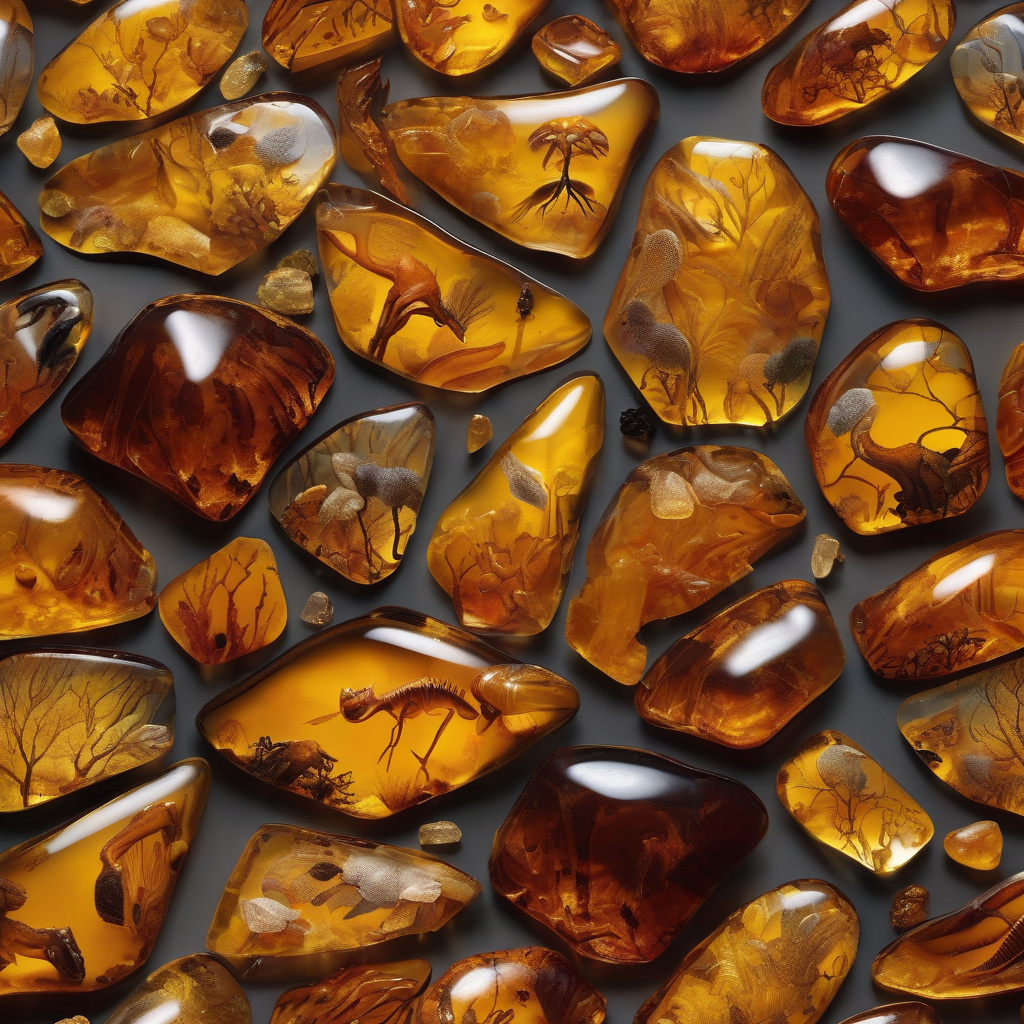Dinosaur-era Tsunami Evidence Found in 100-Million-Year-Old Japanese Amber
In a significant development, scientists have found what they think could be evidence of a dinosaur-era tsunami preserved in 100-million-year-old amber from Japan. This incredible discovery sheds light on a prehistoric event that impacted the ancient ecosystems in a way that we are only beginning to understand.
The study, led by the University of Kansas, focused on tiny air bubbles trapped in the amber. These air bubbles, which date back to the Cretaceous period, contain elevated levels of sulfur. According to the researchers, this sulfur anomaly could indicate that a massive tsunami hit the Japanese islands during the time when dinosaurs roamed the Earth.
Tsunamis are powerful natural disasters, usually caused by underwater earthquakes or volcanic eruptions. In the case of the dinosaur-era tsunami, the researchers believe that an asteroid impact in the ocean might have been the trigger. This catastrophic event would have sent shockwaves through the water, displacing massive amounts of sulfur and other materials that eventually ended up trapped in the amber.
The discovery in the Japanese amber provides a rare glimpse into the environmental upheavals that occurred during the age of dinosaurs. It offers scientists a unique opportunity to study how ancient ecosystems responded to such catastrophic events and how life managed to recover and adapt in the aftermath of natural disasters.
Dr. David Burnham, one of the lead researchers, expressed his excitement about the findings, stating that this discovery could rewrite the history of how tsunamis have shaped our planet over millions of years. By analyzing the chemical composition of the air bubbles in the amber, researchers can reconstruct the timeline of events and gain insights into the long-term effects of tsunamis on biodiversity and ecosystems.
Moreover, the study highlights the importance of unconventional sources, such as amber, in paleontological research. While fossils provide valuable information about ancient life forms, substances like amber offer a unique perspective on past environmental conditions and geological events. In this case, the tiny air bubbles trapped in the amber act as time capsules, preserving crucial evidence of a dinosaur-era tsunami for millions of years.
The implications of this discovery go beyond paleontology and geology. Understanding how tsunamis have influenced the Earth’s history can help us better prepare for future natural disasters and mitigate their impact on modern ecosystems and human populations. By studying ancient events, we can learn valuable lessons that are applicable to our world today.
As scientists continue to unravel the mysteries hidden in 100-million-year-old Japanese amber, the story of the dinosaur-era tsunami serves as a reminder of the Earth’s enduring resilience in the face of cataclysmic events. It also underscores the interconnectedness of all life forms throughout history and the importance of preserving our planet for future generations to come.
#DinosaurEra, #TsunamiEvidence, #JapaneseAmber, #AncientDiscoveries, #NaturalDisastersImpact












